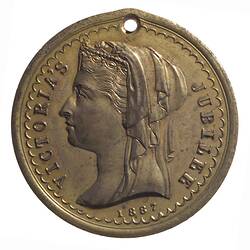The Shire of Hampden was centered on Port Campbell, on the west coast of Victoria, with a narrow strip of land northward including Camperdown, Lismore, Cobden, Shipton and Darlington. A dog-leg to the west took in Hexham and was bounded by the Hopkins River.
Hampden was named after John Hampden (1594-1643), an English Member of Parliament opposed to the Stuart family's claim to the throne of England.
The earliest established pastoral run was established in Hampden in 1838 by John and Peter Manifold. Construction of the homestead, which is still standing, started in 1842. It was a primitive bluestone and weatherboard dwelling, integrated into a larger building in the 1850s. The remainder of the area was taken up during 1839-40.
The Hampden Roads District was created on 28 April 1857. Its office was in Camperdown. The Shire of Hampden was proclaimed on 31 December 1863. The first president was local doctor and Scottish immigrant Dr Daniel Curdie. He had previously been an original member of the Hampden and Heytesbury District Roads Board, formed on 25 April 1857. He and his nephew Daniel Mackinnon took up a run ten miles south of modern Camperdown, which they called Tandarook (now Cobden). Three years later the partnership broke up and Curdie took 17,686 acres; Mackinnon took 10,000 acres with a new partner.
The Shire offices were initially located in an old court house in Camperdown. They were located in part of the bluestone Masonic Hall in Camperdown from 1869 to 1885, where a dedicated shire hall was built.
From 1880 to the early twentieth century the Shire employed Health Officers - qualified doctors responsible for public health. Infrastructure continued to improve with the arrival of the railway in Camperdown in 1883. From the 1870s kerosene lights lit the towns of the Shire. In 1909 electric lighting became available in Camperdown. Lismore finally received electric lighting in 1938, and Skipton in 1939.
Dairying became a significant local industry in the late nineteenth century. The first co-operative butter factory was established in Cobden in 1888: the Pioneer Factory. Camperdown's first co-operative butter factory was established in 1891. Sheep farming also became part of the local economy. In 1905, however, when land in the north of the Shire was opened up for closer settlement, it because clear that 500-800 acres was not viable for sheep farming, and much land was turned over to cereal crops, particularly wheat.
In 1887 the Shire issued a medal to commemorate the jubilee of Queen Victoria (NU 20406). Eight years later the East and West Ridings of the Shire of Hampden were severed to form the Shire of Heytesbury. In 1952 the Borough of Camperdown was severed from the Shire of Hampden.
During World War I the Shire offices became a recruiting centre and headquarters for many war-related appeals.
On 23 September 1994 the Shires of Hampden and Heytesbury, the Town of Camperdown and parts of the Shires of Otway, Mortlake and Warrnambool were united to form the Corangamite Shire Council.
References:
Municipal Association of Victoria website http://www.mav.asn.au/, accessed 09/12/2003.
Blake, L. (1977). Place Names of Victoria
Victorian Heritage Register website http://www.doi.vic.gov.au/doi/hvolr.nsf, accessed 09/12/2003.
McAlpine, R. A. (1963). The Shire of Hampden, 1863-1963.
Accorting to Chitty, Hampden = Hampton. He is incorrect on this point.
More Information
-
Keywords
-
Localities
-
Authors
-
Article types

